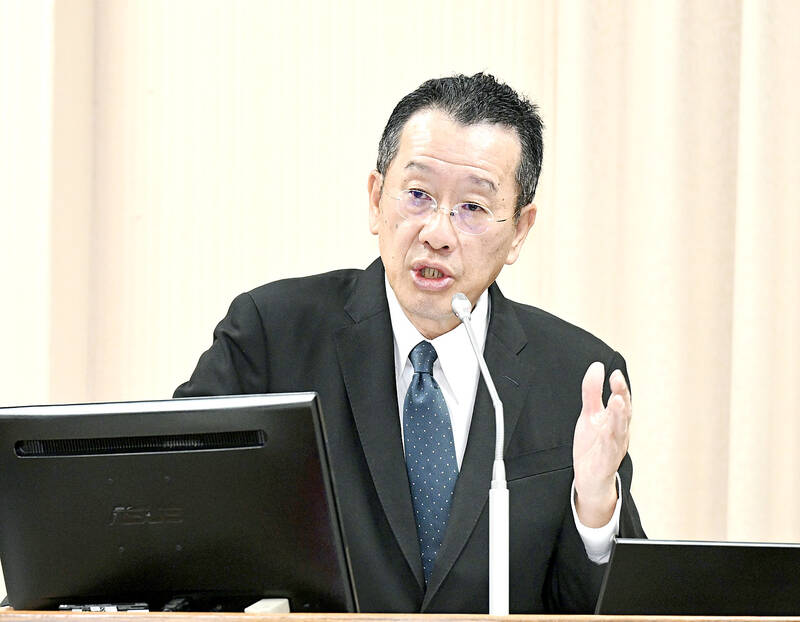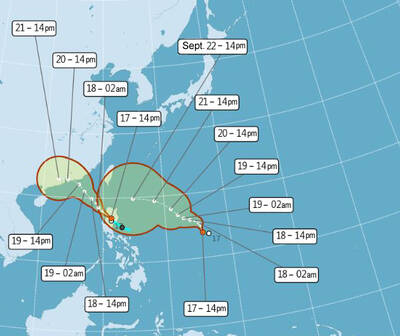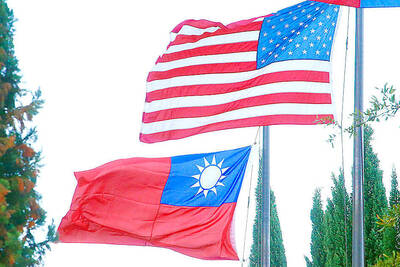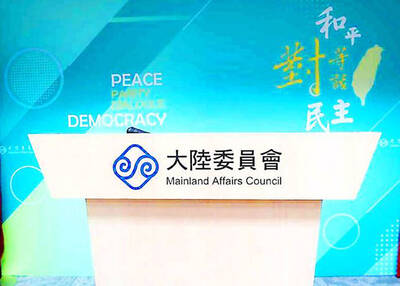Strict controls would be implemented when indigenous drones enter mass production, Minister of National Defense Wellington Koo (顧立雄) said at the legislature in Taipei yesterday, following reports that Taiwan’s Rui Yuan II (銳鳶, Sharp Hawk) contains Chinese-made components.
Chinese-language media reported that import inspections showed that the indigenous Rui Yuan II uncrewed aerial vehicle (UAV), designed by the Chungshan Institute of Science and Technology, contained communication modules and SD cards that were made in China.
Military drones should be entirely free from Chinese components in the “red supply chain,” and stricter controls would be implemented once the Rui Yuan II drones enter mass production, Koo told lawmakers.

Photo: Lo Pei-de, Taipei Times
The drone has not yet entered mass production and is still in the research-and-development stage, institute president Lee Shih-chiang (李世強) said.
The institute has enforced contract provisions requiring the manufacturer to replace the Chinese-made components with items from Taiwan’s own supply chain, Lee said.
The institute imports many components and contracts contain stipulations on source countries, although it is not feasible for on-site manufacturing audits to be conducted abroad, he said.
Sourcing issues often arise in the latter stages of product development, he said.
The institute would assist the manufacturer to find alternative components and establish non-red supply chains that would ensure no products contain Chinese-made elements, he added.
The military has guidelines stipulating that products containing components from Chinese supply chains cannot be used in key weapons and equipment, Koo said.
This is enforced using factory inspections and country-of-origin certificates at the start of the development process, as well as conducting comprehensive final inspections, he said.
The military ranks Chinese-manufactured items using a five-tier classification system, with no regulations on whether non-critical items such as tables are made in China, Koo said.
However, Chinese-made components with transmission capabilities are strictly prohibited, he added.
Separately, a ministry report showed that the reliability of Stinger missile launches over the past three years was 87.2 percent, demonstrating that the missile type satisfies the military’s combat and exercise needs.
Stinger missiles have been a staple anti-air missile for field units of the army, the report said, adding that they are carried by Boeing’s AN/TWQ-1 Avenger Air Defense System, dual-mount Stingers and AH-64E Apache helicopters.
The US Army mainly deploys FIM-92 C, D and H missiles from those platforms, and it is looking to upgrade to the F and K-type missiles, the report said.
The FIM-92F, which is in mass production, improved upon the previous version, the FIM-92E, while the FIM-92K variant would be vehicle-mounted and use the vehicle’s target link systems to track targets, it said.
Taiwan’s military commissioned the US to conduct an environmental assessment for missile storage sheds across the nation from 2014 to 2023, which found that missile storage safety was sound, the report said.
The military budgeted NT$326.49 million (US$10.78 million) to extend the project to 2029, although the price could change based on US quotes, it said.
The military is to launch a project to procure 2,121 Stinger missiles for the army, navy and the military police, which, on top of ongoing procurements, would bring the total to 2,621 Stinger missiles by 2031, it said.
In other news, the ministry’s Shen Gong exercises were held yesterday at Pingtung County’s Jioupeng Base (九鵬), involving the army’s Artillery Training Command, the 21st Artillery Command and the 58th Artillery Command, as well as artillery units from Hualien, Penghu, Kinmen and Lienchiang counties.

Taiwan is projected to lose a working-age population of about 6.67 million people in two waves of retirement in the coming years, as the nation confronts accelerating demographic decline and a shortage of younger workers to take their place, the Ministry of the Interior said. Taiwan experienced its largest baby boom between 1958 and 1966, when the population grew by 3.78 million, followed by a second surge of 2.89 million between 1976 and 1982, ministry data showed. In 2023, the first of those baby boom generations — those born in the late 1950s and early 1960s — began to enter retirement, triggering

One of two tropical depressions that formed off Taiwan yesterday morning could turn into a moderate typhoon by the weekend, the Central Weather Administration (CWA) said yesterday. Tropical Depression No. 21 formed at 8am about 1,850km off the southeast coast, CWA forecaster Lee Meng-hsuan (李孟軒) said. The weather system is expected to move northwest as it builds momentum, possibly intensifying this weekend into a typhoon, which would be called Mitag, Lee said. The radius of the storm is expected to reach almost 200km, she said. It is forecast to approach the southeast of Taiwan on Monday next week and pass through the Bashi Channel

NO CHANGE: The TRA makes clear that the US does not consider the status of Taiwan to have been determined by WWII-era documents, a former AIT deputy director said The American Institute in Taiwan’s (AIT) comments that World War-II era documents do not determine Taiwan’s political status accurately conveyed the US’ stance, the US Department of State said. An AIT spokesperson on Saturday said that a Chinese official mischaracterized World War II-era documents as stating that Taiwan was ceded to the China. The remarks from the US’ de facto embassy in Taiwan drew criticism from the Ma Ying-jeou Foundation, whose director said the comments put Taiwan in danger. The Chinese-language United Daily News yesterday reported that a US State Department spokesperson confirmed the AIT’s position. They added that the US would continue to

The number of Chinese spouses applying for dependent residency as well as long-term residency in Taiwan has decreased, the Mainland Affairs Council said yesterday, adding that the reduction of Chinese spouses staying or living in Taiwan is only one facet reflecting the general decrease in the number of people willing to get married in Taiwan. The number of Chinese spouses applying for dependent residency last year was 7,123, down by 2,931, or 29.15 percent, from the previous year. The same census showed that the number of Chinese spouses applying for long-term residency and receiving approval last year stood at 2,973, down 1,520,